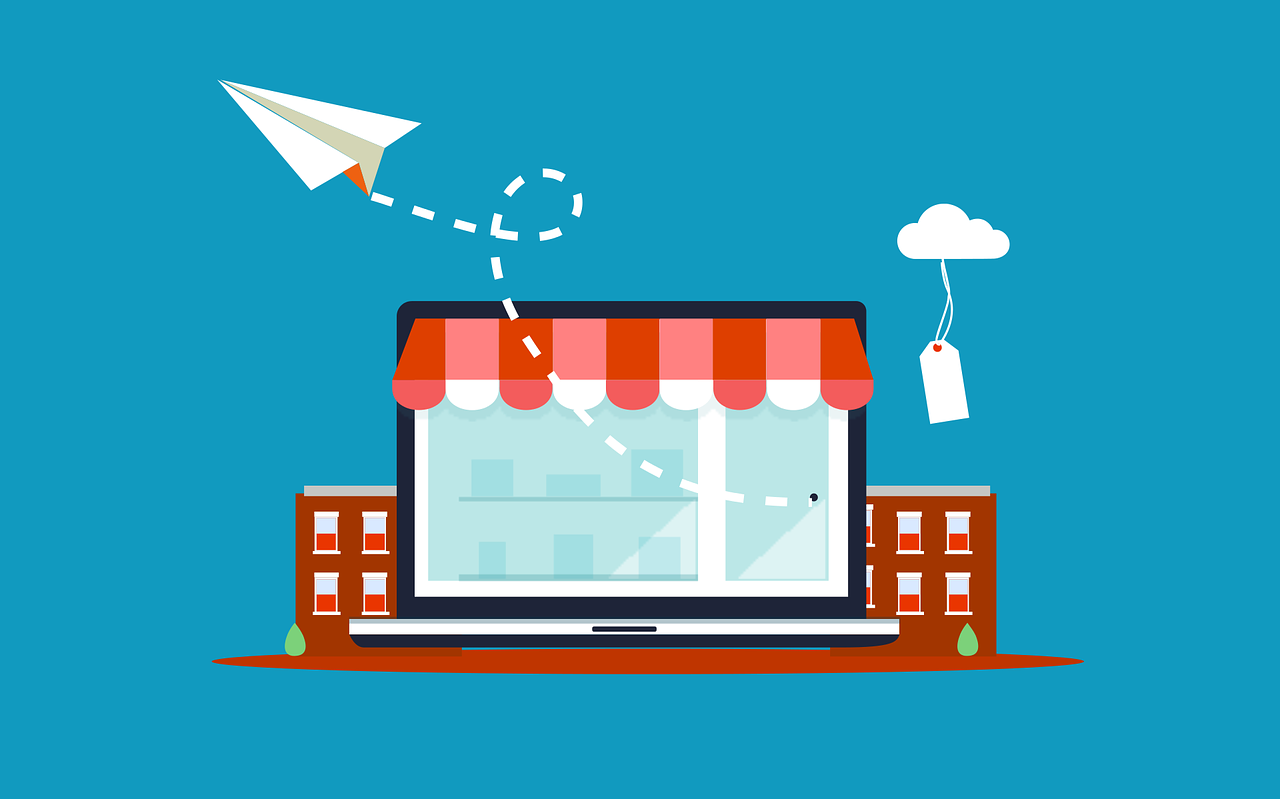Unveiling E-commerce: Exploring Types, Tracing its History, and Examples
What Is Electronic Commerce (E-commerce)?
Electronic commerce (e-commerce) refers to companies and individuals that buy and sell goods and services over the internet. E-commerce operates in different types of market segments and can be conducted over computers, tablets, smartphones, and other smart devices. Nearly every imaginable product and service is available through e-commerce transactions, including books, music, plane tickets, and financial services such as stock investing and online banking. As such, it is considered a very disruptive technology.
Key Takeaways
- E-commerce is the buying and selling of goods and services over the internet.
- It is conducted over computers, tablets, smartphones, and other smart devices.
- Almost anything can be purchased through e-commerce today, which makes e-commerce highly competitive.
- It can be a substitute for brick-and-mortar stores, though some businesses choose to maintain both.
- E-commerce operates in several market segments including business-to-business, business-to-consumer, consumer-to-consumer, and consumer-to-business.
Understanding E-commerce
As noted above, e-commerce is the process of buying and selling tangible products and services online. It involves more than one party along with the exchange of data or currency to process a transaction. It is part of the greater industry that is known as electronic business (e-business), which involves all of the processes required to run a company online.
E-commerce has helped businesses (especially those with a narrow reach like small businesses) gain access to and establish a wider market presence by providing cheaper and more efficient distribution channels for their products or services. Target (TGT) supplemented its brick-and-mortar presence with an online store that allows customers to purchase everything from clothes and coffeemakers to toothpaste and action figures right from their homes.
Providing goods and services isn’t as easy as it may seem. It requires a lot of research about the products and services you wish to sell, the market, audience, competition, as well as expected business costs.
Once that’s determined, you need to come up with a name and set up a legal structure, such as a corporation. Next, set up an e-commerce site with a payment gateway. For instance, a small business owner who runs a dress shop can set up a website promoting their clothing and other related products online and allow customers to make payments with a credit card or through a payment processing service, such as PayPal.
E-commerce may be thought of as a digital version of mail-order catalog shopping. Also called online commerce, e-commerce is the transaction between a buyer and a seller that leverages technology.
The 6 Ways to Grow a Company
Special Considerations
E-commerce has changed the way people shop and consume products and services. More people are turning to their computers and smart devices to order goods, which can easily be delivered to their homes. As such, it has disrupted the retail landscape. Amazon and Alibaba have gained considerable popularity, forcing traditional retailers to make changes to the way they do business.
But that’s not all. Not to be outdone, individual sellers have increasingly engaged in e-commerce transactions via their own personal websites. And digital marketplaces such as eBay or Etsy serve as exchanges where multitudes of buyers and sellers come together to conduct business.
The U.S. Department of Commerce recognizes e-commerce businesses such as transactional sites, static content sites, online marketplaces, and auction sites.
History of E-commerce
Most of us have shopped online for something at some point, which means we’ve taken part in e-commerce. So it goes without saying that e-commerce is everywhere. But very few people may know that e-commerce has a history that goes back to before the internet began.
E-commerce actually goes back to the 1960s when companies used an electronic system called the Electronic Data Interchange to facilitate the transfer of documents. It wasn’t until 1994 that the very first transaction. took place. This involved the sale of a CD between friends through an online retail website called NetMarket.
The industry has gone through so many changes since then, resulting in a great deal of evolution. Traditional brick-and-mortar retailers were forced to embrace new technology in order to stay afloat as companies like Alibaba, Amazon, eBay, and Etsy became household names. These companies created a virtual marketplace for goods and services that consumers can easily access.
New technology continues to make it easier for people to do their online shopping. People can connect with businesses through smartphones and other devices and by downloading apps to make purchases. The introduction of free shipping, which reduces costs for consumers, has also helped increase the popularity of the e-commerce industry.
Advantages and Disadvantages of E-commerce
Advantages
E-commerce offers consumers the following advantages:
- Convenience: E-commerce can occur 24 hours a day, seven days a week. Although eCommerce may take a lot of work, it is still possible to generate sales as you sleep or earn revenue while you are away from your store.
- Increased Selection: Many stores offer a wider array of products online than they carry in their brick-and-mortar counterparts. And many stores that solely exist online may offer consumers exclusive inventory that is unavailable elsewhere.
- Potentially Lower Start-up Cost: E-commerce companies may require a warehouse or manufacturing site, but they usually don’t need a physical storefront. The cost to operate digitally is often less expensive than needing to pay rent, insurance, building maintenance, and property taxes.
- International Sales: As long as an e-commerce store can ship to the customer, an e-commerce company can sell to anyone in the world and isn’t limited by physical geography.
- Easier to Retarget Customers: As customers browse a digital storefront, it is easier to entice their attention towards placed advertisements, directed marketing campaigns, or pop-ups specifically aimed at a purpose.
Disadvantages
There are certain drawbacks that come with e-commerce sites, too. The disadvantages include:
- Limited Customer Service: If you shop online for a computer, you cannot simply ask an employee to demonstrate a particular model’s features in person. And although some websites let you chat online with a staff member, this is not a typical practice.
- Lack of Instant Gratification: When you buy an item online, you must wait for it to be shipped to your home or office. However, e-tailers like Amazon make the waiting game a little bit less painful by offering same-day delivery as a premium option for select products.
- Inability to Touch Products:Online images do not necessarily convey the whole story about an item, and so e-commerce purchases can be unsatisfying when the products received do not match consumer expectations. Case in point: an item of clothing may be made from shoddier fabric than its online image indicates.
- Reliance on Technology: If your website crashes, garners an overwhelming amount of traffic, or must be temporarily taken down for any reason, your business is effectively closed until the e-commerce storefront is back.
- Higher Competition: Although the low barrier to entry regarding low cost is an advantage, this means other competitors can easily enter the market. E-commerce companies must have mindful marketing strategies and remain diligent on SEO optimization to ensure they maintain a digital presence.
Pros
- Owners can generate revenue semi-passively
- Consumers can easily browse for specific products
- Greater earning potential as there are no limitations on physical location as long you can ship there
- Reduced costs assuming digital presence costs less than building, insurance, taxes, and repairs.
- Greater marketing control, including data extraction from customers, targeted ads, and pop-up placement
Cons
- Limited customer service opportunities as there is little to no face-to-face opportunities
- Lacks instant gratification as customers must believe in a product before seeing it in person
- Products can’t been seen or handled until delivered (can’t try before they buy)
- Loss of revenue or income when websites go down
- High reliance on shipping constraints
- Higher competition due to lower barriers of entry and greater customer potential
Types of E-commerce
Depending on the goods, services, and organization of an ecommerce company, the business can opt to operate several different ways. Here are several of the popular business models.
Business-to-Consumer (B2C)
B2C e-commerce companies sell directly to the product end-user. Instead of distributing goods to an intermediary, a B2C company performs transactions with the consumer that will ultimately use the good.
This type of business model may be used to sell products (like your local sporting goods store’s website) or services (such as a lawn care mobile app to reserve landscaping services). This is the most common business model and is likely the concept most people think about when they hear the term e-commerce.
Business-to-Business (B2B)
Similar to B2C, an e-commerce business can directly sell goods to a user. However, instead of being a consumer, that user may be another company. B2B transactions often entail larger quantities, greater specifications, and longer lead times. The company placing the order may also have a need to set recurring goods if the purchase is for recurring manufacturing processes.
Business-to-Government (B2G)
Some entities specialize as government contractors providing goods or services to agencies or administrations. Similar to a B2B relationship, the business produces items of value and remits those items to an entity.
B2G e-commerce companies must often meet government requests for proposal requirements, solicit bids for projects, and meet very specific product or service criteria. In addition, there may be joint government endeavors to solicit a single contract through a government-wide acquisition contract.
Consumer-to-Consumer (C2C)
Established companies are the only entities that can sell things. E-commerce platforms such as digital marketplaces connect consumers with other consumers who can list their own products and execute their own sales.
These C2C platforms may be auction-style listings (i.e. eBay auctions) or may warrant further discussion regarding the item or service being provided (i.e. Craigslist postings). Enabled by technology, C2C e-commerce platforms empower consumers to both buy and sell without the need for companies.
Consumer-to-Business (C2B)
Modern platforms have allowed consumers to more easily engage with companies and offer their services, especially related to short-term contracts, gigs, or freelance opportunities. For example, consider listings on Upwork.
A consumer may solicit bids or interact with companies that need particular jobs done. In this way, the e-commerce platform connects businesses with freelancers to enable consumers greater power to achieve pricing, scheduling, and employment demands.
Consumer-to-Government (C2G)
Less of a traditional e-commerce relationship, consumers can interact with administrations, agencies, or governments through C2G partnerships. These partnerships are often not in the exchange of service but rather, the transaction of obligation.
For example, uploading your federal tax return to the Internal Revenue Service (IRS) digital website is an e-commerce transaction regarding an exchange of information. Alternatively, you may pay your tuition to your university online or remit property tax assessments to your county assessor.
The U.S. Census Bureau conducts estimates of retail e-commerce sales in the United States. In the first quarter of 2023, retail e-commerce accounted for 15.1% of total sales in the country, totaling roughly $272.6 billion. These figures are adjusted for seasonal variation.
Types of E-commerce Revenue Models
In addition to crafting what type of e-commerce company a business wants to be, the business must decide how it wants to make money. Due to the unique nature of e-commerce, the business has a few options on how it wants to process orders, carry inventory, and ship products.
Dropshipping
Often considered one of the easier forms of e-commerce, dropshipping allows a company to create a digital storefront, generate sales, then rely on a supplier to provide the good. When generating the sale, the e-commerce company collects payment via credit card, PayPal, cryptocurrency, or other means of digital currency.
Then, the e-commerce store passes the order to the dropship supplier. This supplier manages inventory, oversees the warehouse of goods, packages the goods, and delivers the product to the purchaser.
White Labeling
White-label e-commerce companies leverage already successful products sold by another company. After a customer places an order, the e-commerce company receives the existing product, repackages the product with its own package and label, and distributes the product to the customer. Although the e-commerce company has little to no say in the product they receive, the company usually faces little to no in-house manufacturing constraints.
Wholesaling
A more capital-intensive approach to e-commerce, wholesaling entails maintaining quantities of inventory, keeping track of customer orders, maintaining customer shipping information, and typically having ownership of the warehouse space to house products.
Wholesalers may charge bulk pricing to retailers or unit prices for consumers. However, the broad approach to wholesaling is to connect to buyers of large quantities or many smaller buyers of a similar, standardized product.
Private Labeling
Private labeling is a more appropriate e-commerce approach for companies that may not have large upfront capital or do not have their own factory space to manufacture goods. Private label e-commerce companies send plans to a contracted manufacturer who makes the product.
The manufacturer may also have the ability to ship directly to a customer or ship directly to the company receiving the order. This method of e-commerce is best suited for companies that may receive on-demand orders with short turnaround times but are unable to handle the capital expenditure requirements.
Subscription
E-commerce companies can also leverage repeating orders or loyal customers by implementing subscription services. For a fixed price, the e-commerce company will assemble a package, introduce new products, and incentivize locking to a long-term agreement at a lower monthly price.
The consumer only places an order once and receives their subscription order at a fixed cadence. Common subscription e-commerce products include meal prep services, agriculture boxes, fashion boxes, or health and grooming products.
Example of E-commerce
Amazon is a behemoth in the e-commerce space. In fact, it is the world’s largest online retailer and continues to grow. As such, it is a huge disrupter in the retail industry, forcing some major retailers to rethink their strategies and shift their focus.
The company launched its business with an e-commerce-based model of online sales and product delivery. It was founded by Jeff Bezos in 1994 as an online bookstore but has since expanded to include everything from clothing to housewares, power tools to food and drinks, and electronics.
Company sales increased by 9% in 2022 from the previous year, totaling $513.98 billion compared to $469.82 billion in 2021. Amazon’s operating income dropped from $24.88 billion in 2021 to $$12.25 billion in 2022. The company posted a net loss of $2.72 billion in 2022, compared to net income of $33.36 billion in 2021.
How Do You Start an E-commerce Business?
Make sure you do your research before you start your business. Figure out what products and services you’re going to sell and look into the market, target audience, competition, and expected costs.
Next, come up with a name, choose a business structure, and get the necessary documentation (taxpayer numbers, licenses, and permits if they apply).
Before you start selling, decide on a platform and design your website (or have someone do it for you).
Remember to keep everything simple at the beginning and make sure you use as many channels as you can to market your business so it can grow.
What Is an E-commerce Website?
An e-commerce website is any site that allows you to buy and sell products and services online. Companies like Amazon and Alibaba are examples of e-commerce websites.
What Is the Difference Between E-commerce and E-business?
E-commerce involves the purchase and sale of goods and services online and is actually just one part of e-business. An e-business involves the entire process of running a company online. Put simply, it’s all of the activity that takes place with an online business.
What Is an Example of E-commerce?
Dollar Shave Club offers customers personal grooming, health, and beauty products. Customers can opt for what product(s) they want shipped to them and can sign up for long-term memberships to have products sent to them on a recurring basis. Dollar Shave Club procures goods in bulk from other companies, then bundles those products, maintains membership subscriptions, and markets the products.
What Are the Types of E-commerce?
An e-commerce company can sell to customers, businesses, or agencies such as the government. E-commerce can also be performed by customers who sell to businesses, other customers, or governments.
The Bottom Line
E-commerce is just one part of running an e-business. While the latter involves the entire process of running a business online, e-commerce simply refers to the sale of goods and services via the internet. E-commerce companies like Amazon, Alibaba, and eBay have changed the way the retail industry works, forcing major, traditional retailers to change the way they do business.
If starting an e-commerce site is something you’re considering, make sure you do your research before you start. And make sure you start with a small, narrow focus to ensure that you have room to grow.
Source




